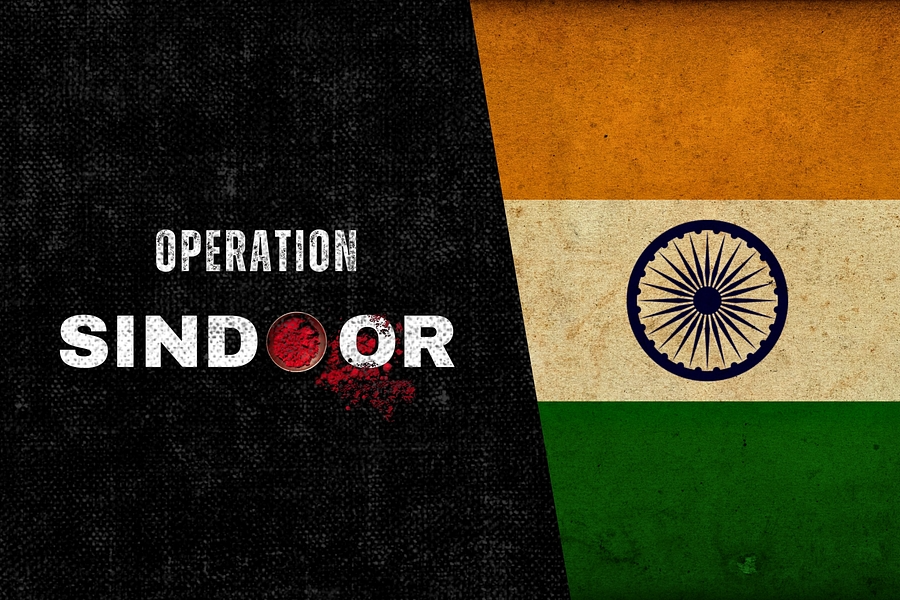August 02nd Current Affairs
Table of Contents
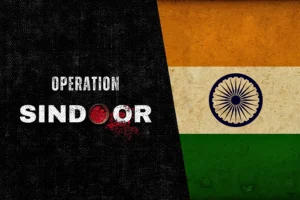
Operation Sindoor
July 21st Current Affairs Home / Operation Sindoor Why in News? Parliament’s Monsoon Session, starting July 21, 2025, is expected to feature

Alaska Earthquakes
July 21st Current Affairs Home / Alaska Earthquakes Why in News? On July 21, 2025, Alaska Peninsula was struck by

August 2, 2027 Solar Eclipse
July 21st Current Affairs Home / August 2, 2027 Solar Eclipse Why in News? A total solar eclipse is set

India’s milestone in clean energy transition
July 21st Current Affairs Home / India’s milestone in clean energy transition Why in News? India achieved a milestone by

‘Baby Grok’, child-friendly AI app
July 21st Current Affairs Home / ‘Baby Grok’, Child-friendly AI app Why in News? Elon Musk’s AI company xAI has announced
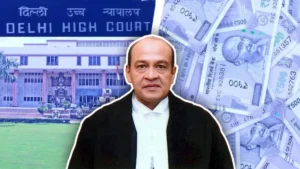
Impeachment proceedings against Justice Yashwant Verma
July 22nd Current Affairs Home / Impeachment proceedings against Justice Yashwant Verma Context On July 22, 2025, impeachment proceedings against
Counter‑terror operations in Jammu & Kashmir
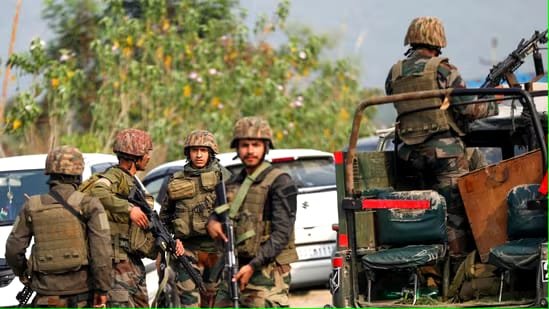
Context
On August 2, 2025, security forces in Jammu & Kashmir’s Kulgam district launched Operation Akhal, a joint cordon-and-search mission by Indian Army’s Chinar Corps, J&K Police, and CRPF in the Akhal forest, based on specific intelligence. One terrorist was neutralised in intense fighting that continued through the night, with two others believed trapped within the cordon. This marks the third encounter in J&K in a single week, cumulatively resulting in six terrorists killed, including the three involved in the Pahalgam terror attack of 22 April 2025
Background
On 22 April 2025, militants attacked tourists in Baisaran meadow near Pahalgam, killing 26 civilians, mostly non‑Muslims. An ISI-backed offshoot of Lashkar‑e‑Taiba, The Resistance Front (TRF), claimed responsibility; intelligence and forensic matching later confirmed the involvement of Pakistani nationals, including a former Pakistani Army special forces commando identified as Suleiman Shah. In Operation Mahadev (July 28, 2025), a joint force killed three terrorists linked to that attack, including the alleged mastermind Suleiman and two associates Abu Hamza and Yasir. Weapons, ballots, and satellite-tracked communications corroborated their identity.
Constitutional Provisions & Laws
- Article 21 of the Constitution: right to life and due process; however, in armed encounters, use-of-force must follow standards of proportionality and necessity.
- Arms Act, Unlawful Activities (Prevention) Act, 1967 (UAPA): criminalises membership, assistance, and activities of terrorist organisations.
- AFSPA (Armed Forces Special Powers Act): applied in J&K, empowers security forces to use lethal force, conduct searches, and make arrests in “disturbed areas” while providing legal immunity, though internal protocols govern its exercise.
- India is also party to UN conventions such as the International Convention for the Suppression of Terrorist Bombings and Suppression of Financing of Terrorism, which mandate investigation, prosecution, and preventive measures.
Supreme Court Cases & Verdicts
- Naga People’s Movement case (2016): SC upheld applicability of AFSPA in disturbed regions but emphasised need for periodic review, judicial oversight, and minimizing civilian harm.
- PUCL vs Union of India (2003): emphasised judicial inquiry in fake encounter cases; proportionality and accountability must be preserved.
- These rulings underscore the need for operational transparency, even in high-threat zones, to reconcile security action with constitutional safeguards.
Significance
- Sent important political and strategic messages: post-Pahalgam, India demonstrated capability in precise retaliation (Op Mahadev) and sustained pressure (Op Akhal).
- Dismantling of TRF cells and elimination of cross-border militants curtails future terrorist mobilisation and retribution cycles.
- Reinforcement of intelligence-driven kinetic structure helps disrupt terror networks before they act.
Technical Terms
- Cordon-and‑Search Operation (CASO): tactical manoeuvre surrounding an area to isolate and neutralise threats.
- Intelligence, Surveillance, Reconnaissance (ISR): includes aerial, human, and signals intelligence.
- Calibration of fire: controlled use of force to minimize collateral damage.
Security & Strategic Nuances
- Tracks multi‑layered intelligence: signals (satellite comms), human informants, surveillance.
- Joint forces integration—Army, CRPF, Police—provides synergy in terrain navigation and legal mandates.
- Timing operations shortly after Pahalgam shows anticipation of militant regrouping in Kashmiri forests, cutting feeding and hiding points.
Impacts on Security
- Degrades TRF’s active cell strength; curbs external infiltration and internal radicalisation.
- Sends deterrent signal to Pakistan-based terror infrastructure—that cross-border perpetrators can no longer seek refuge.
- Reassures civilian and tourist confidence in Kashmir’s security architecture, potentially aiding economic recovery.
Challenges
- Terrain: dense forests favour militants; operations risk collateral damage or civilian displacement.
- Intelligence reliability: risk of false positives or locals being incriminated without due proof.
- Legal accountability: use of lethal force must avoid allegations of extra-judicial killings.
- Pakistan’s official denial of involvement (“fabrications”) complicates international narrative management.
Way Forward
- Strengthen multi‑agency intelligence fusion centres for pre‑emptive action.
- Enhance community liaison mechanisms to reduce civilian distrust and intel vacuum.
- Reinforce oversight: embed judicial and human rights monitors for transparency.
- Continue legal action under UAPA, supported by ballistics and forensic evidence.
- Engage diplomatically to counter disinformation and coerce Pakistan into curbing terror sponsorship.
Prelims MCQ
Q. Consider the following statements regarding the recent encounters in J&K’s Kulgam district:
- The neutralised terrorists in Operation Akhal were confirmed members of The Resistance Front (TRF), an offshoot of Lashkar‑e‑Taiba, and were directly linked to the Pahalgam terror attack.
- Operation Mahadev preceded Operation Akhal and resulted in the elimination of three terrorists, including the alleged mastermind of the Pahalgam attack.
Which of the statements is/are correct?
A. 1 only
B. 2 only
C. Both 1 and 2
D. Neither 1 nor 2
Answer: C. Both 1 and 2
Explanation:
Statement 1 is supported by credible reports indicating that in Operation Akhal, the terrorists engaged were affiliated with The Resistance Front (TRF)—a Lashkar‑e‑Taiba offshoot—and had known links to the Pahalgam attack. One terrorist was neutralised on August 2; intelligence suggested two others were trapped. Media confirmed the link between the Akhal operation’s targets and the previously implicated Pahalgam cell.
Statement 2 is also correct: Operation Mahadev, conducted on 28 July 2025, eliminated three terrorists, including Suleiman Shah, identified as the Pahalgam mastermind, along with associates Abu Hamza and Yasir. This preceded Operation Akhal and marked the culmination of a tracking effort spanning satellite communication interception, human intelligence, and forensic ballistics matching.
Mains Question
Q. Discuss the strategic and legal challenges in conducting kinetic counter‑terror operations such as “Operation Akhal” and “Operation Mahadev” in Jammu & Kashmir?
After NISAR, ISRO is collaborating with the US for Blue Bird communications satellite launch
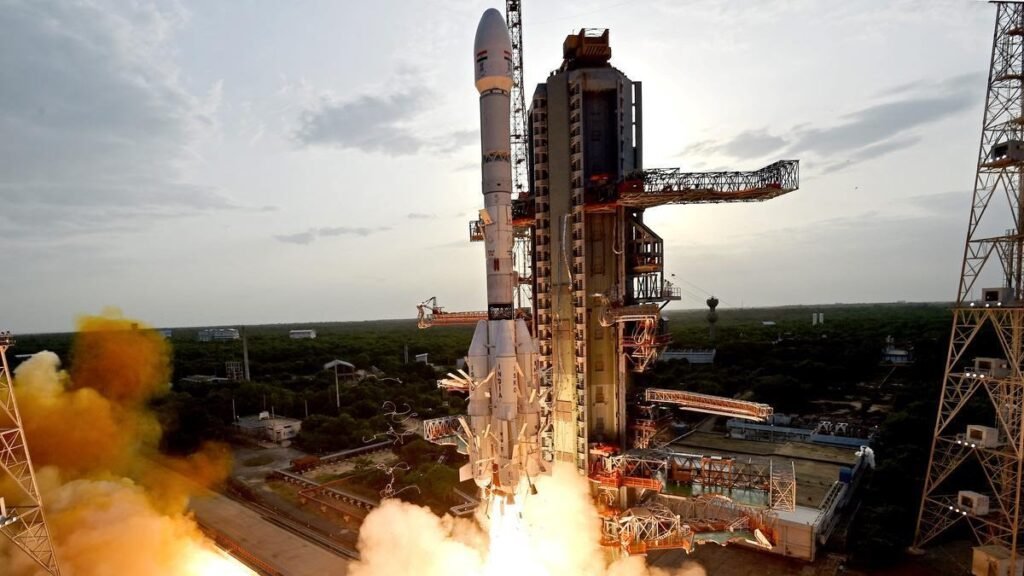
Context
On August 1, 2025, ISRO Chairman V. Narayanan announced preparations to launch the Block 2 BlueBird communications satellite developed by U.S.-based AST SpaceMobile, slated within 3–4 months. The mission follows closely after the successful launch of the NISAR Earth observation satellite on July 30 aboard ISRO’s LVM3 (GSLV-Mk III). The ~6,000–6,500 kg Blue Bird Block 2 will lift off from Satish Dhawan Space Centre, Sriharikota, marking a land mark Indo‑U.S. collaboration in commercial space services.
Background
ISRO and NSIL (New Space India Ltd) have long been orbiting international commercial launches, mostly for smaller U.S. satellites. This marks the first time a large-scale U.S. communications satellite—Blue Bird Block 2—will be launched on an Indian rocket. Blue Bird Block 2 is part of AST Space Mobile’s constellation aimed at delivering direct-to-smartphone voice and broadband services, without special terminal hardware, via a massive ~64 m² phased-array antenna, designed for data speeds up to 120 Mbps in LEO.
Earlier, AST conducted successful prototypes (BlueWalker 3) and deployed five Block 1 BlueBirds via SpaceX in September–October 2024. Subsequently, AST signed multi-launch contracts with Blue Origin (New Glenn) and SpaceX, plus one single-launch agreement with ISRO for Block 2 deployment, originally targeted for Q1 2025 but deferred to Q2/Q3 due to satellite readiness delays.
Government Schemes
- NSIL commercialises India’s space infra, enabling foreign satellite launches on Indian rockets.
- Indian Space Policy (2023) promotes international partnerships and private sector engagement.
- Strategic push to monetise LVM3 capabilities and capture global launch market share.
Laws and UN Conventions
- Governed by Outer Space Treaty obligations under UNCOPUOS, to ensure peaceful usage, non-interference, and responsible behaviour in orbit.
- NSIL and ISRO must ensure compliance with UN Convention on Registration of Objects Launched into Outer Space, maintaining liability, transparency, and debris mitigation compliance.
- India’s IT Act, Wireless Telegraphy Act, and telecom licensing regimes apply to spectrum usage of satellite connectivity services.
Reasons & Significance
- Technological significance: Execution of a ~6‑6.5 ton payload via LVM3 demonstrates India’s capacity for heavy-lift commercial missions.
- Strategic significance: Enhances Indo‑U.S. space ties, showing India as a cost-competitive, reliable launch partner.
- Market significance: Bolsters India’s position in the global launch services market and diversifies revenue streams for NewSpace India.
- Connectivity significance: BlueBird enables satellite-to-cellphone broadband—critical for bridging gaps in rural connectivity and disaster-hit regions.
Technical Terms Defined
- LEO: Low Earth Orbit (~500–1,200 km altitude) for reduced latency and improved bandwidth.
- Phased-array antenna: Electronically steerable large surface enabling direct cellular links to standard smartphones.
- Block 2: Next‑gen version offering ~10× bandwidth over Block 1 prototype, higher throughput, continuous coverage.
- LVM3: ISRO’s heaviest launcher capable of ~6 t to GTO; successor name for GSLV-Mk III.
Security & Strategic Nuances
- Spectrum licensing: Satellite must match Indian telecom regulations if providing services over India.
- National security: Payload from a U.S. firm; data security protocols and payload oversight must align with Indian spectrum and encryption norms.
- Orbital debris: Large phased arrays must follow debris mitigation; compliance with space traffic management agreements.
Impacts on India’s Space Sector
- Enhances reputation as dependable global launch provider.
- Increases NSIL revenue and order book, encouraging private investment.
- Strengthens India’s role in next-gen space-based 5G/6G ecosystems, contributing to national digital inclusion.
- Deepens bilateral cooperation in strategic technology areas with the U.S.
Challenges
- Schedule slippages: repeated delays from originally planned March 2025 to Q2/Q3 due to satellite shipment and readiness.
- Integration complexities: Heavy satellite integration, ground interface testing.
- Regulatory coordination: Aligning AST’s telecom operations with Indian licensing and spectrum policy.
- Astronomy concerns: AST’s large bright satellites raise concerns among astronomers; mitigation agreements needed.
Way Forward
- Expedite final integration and testing to stick to Q3 2025 timeline.
- Strengthen space‑traffic and spectrum coordination between ISRO, NSIL, DoT, and AST.
- Establish post-launch service protocols and regulatory compliance for AST‑operated service over India.
- Use this collaboration as a template for future high-mass international commercial missions.
- Engage with scientific bodies for mitigating observational interference from large satellite constellations.
Prelims MCQ
Q. Consider the following statements about India’s upcoming launch of AST SpaceMobile’s Block 2 BlueBird satellite:
- It marks the first time ISRO is launching a U.S. satellite weighing over 6,000 kg aboard its heaviest launcher.
- BlueBird Block 2 satellites will enable direct connectivity to standard smartphones without the need for specialised terminals.
- AST SpaceMobile has signed multi-launch agreements with SpaceX and Blue Origin for its Block 2 constellation.
Which of the above statements is/are correct?
A. 1 and 2 only
B. 2 and 3 only
C. 1 and 3 only
D. 1, 2 and 3
Answer: D. All three statements are correct.
Explanation:
Statement 1 is correct: This mission marks the first time a U.S. communications satellite weighing approximately 6,000–6,500 kg (Block 2 BlueBird) will be launched on ISRO’s LVM3 (GSLV-Mk III), its largest launch vehicle.
Statement 2 is correct: AST Space Mobile’s Blue Bird constellation is engineered to connect directly to standard smartphones, enabling voice and broadband data without requiring specialised satellite handsets or external terminals—using 3GPP‑standard cellular frequencies and a massive phased-array antenna on the satellite.
Statement 3 is also correct: AST SpaceMobile has multiple launch agreements including with SpaceX (Block 1 and part of Block 2 deployment), with Blue Origin’s New Glenn for further Block 2 satellites, and a single launch contract with NSIL/ISRO for the first Block 2 satellite from India.
Hence, all three statements are accurate.
Mains Question
Q. Analyse the strategic, technological and regulatory implications of India’s launch of AST SpaceMobile’s Block 2 BlueBird satellite.
Gender disparity in private vs. government school enrolment in India
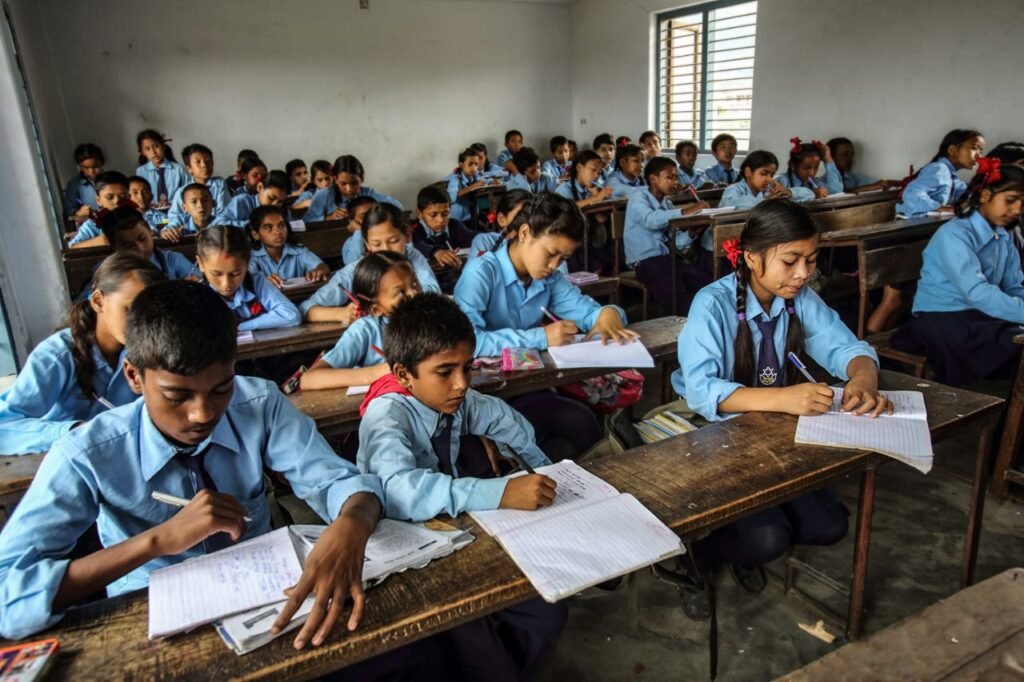
Context
A recent analysis of UDISE+ 2023‑24 data reveals that boys continue to significantly outnumber girls in private school enrollment across India. In 2023‑24, 39 % of boys attended private schools, compared to only 33 % of girls, even though boys and girls enroll in government schools at 49 % and 54 %, respectively. The gender gap is most pronounced in northern and western states, where girls’ overall school attendance is below the national average of 48.1 %, highlighting persistent societal bias.
Background
Over the past decade, India has seen a steady decline in government schools (from 74.2 % to 69.1 % of schools) and a rise in private schools (from 17.2 % to 22.5 %). Concurrently, children enrolled in private institutions rose from 28.2 % to 36.3 % between 2012‑13 and 2023‑24. However, this shift disproportionately benefits boys, indicating that parental investment in private education remains gendered.
Constitutional Provisions & Laws
- Article 21A: Free and compulsory education for children aged 6–14.
- Right of Children to Free and Compulsory Education (RTE) Act, 2009: mandates 25 % reservation in private schools for disadvantaged children but does not impose gender quotas.
- Constitutional guarantee of equality (Article 15): prohibits discrimination but lacks explicit enforcement on gender parity in schooling beyond literacy.
Government Schemes & UN Conventions
- Beti Bachao, Beti Padhao (BBBP): aims to promote girls’ education and reduce gender bias.
- Scholarships: State and central schemes target girl students at secondary levels.
- India is party to UN Sustainable Development Goal 4 (inclusive, equitable quality education) and SDG 5 (gender equality), which push for eliminating disparities in education access.
Reasons
- Patriarchal norms and perceived returns: families often prioritize educating sons, viewing daughters’ education as less valuable due to early marriage or expected domestic roles.
- Financial constraints: private school fees lead families, especially low-income ones, to enrol sons preferentially.
- Distance and safety concerns: in rural or insecure regions, parents may avoid sending daughters to distant private schools.
- Proximity of private schools: many areas lack girl-friendly private schools nearby, affecting girls’ enrolment.
Significance
- Reflects that increased private-sector schooling does not automatically yield gender parity.
- Affects long-term gender empowerment: being in private schools often correlates with better learning outcomes, English medium, and opportunities.
- Deepens inequality in socio-economic mobility between genders.
Technical Terms
- UDISE+: Unified District Information System for Education Plus – national education data repository.
- Gender Parity Index (GPI): ratio of female to male enrollment; values above 1 favor girls, below 1 favor boys.
- Private‑unaided school: institution privately operated without government aid or management.
Educational & Societal Nuances
- Despite skewed access, girls outperform boys academically, especially in board exams, with pass rates in Class XII around 87.5 % for girls vs. 75.6 % for boys in private schools.
- Conversely, in public schools, girls often outnumber boys, and states like Kerala buck the national trend with nearly equal or higher private enrollment rates for girls.
- Inter sectionality: caste, rural-urban divide, and socio-economic status further compound disparities.
Impact on India's Education Sector
- Risks exacerbating gendered inequality in skill acquisition, career opportunities, and earning potential.
- Private-school concentration of boys accentuates gaps in technology readiness and English proficiency.
- Public schools may become increasingly under-resourced if girls predominantly attend them and boys shift to private institutions.
Challenges
- Deep-rooted societal bias is resistant to interventions.
- Financial barriers persist; even scholarships may fail to offset the overall cost differential.
- Infrastructure: government schools may lack quality that attracts parents to send daughters.
- Parental perceptions: private education seen as essential for boys’ future, not girls’.
Way Forward
- Gender‑sensitive quotas in private schools: e.g. fee concessions or reserved seats for girls.
- Strengthening quality and infrastructure of government schools, especially girl‑friendly facilities (toilets, safety, transport).
- Intensify community-level sensitization programmes and involve Panchaya Raj Institutions and School Management Committees to champion girls’ enrolment.
- Expand scholarship and incentive schemes targeting private enrolment of girls.
- Monitor disaggregated data (by gender, region, caste, level) to inform targeted policies.
Prelims MCQ
Q. With reference to school enrolment in India during 2023-24, consider the following statements:
- In private schools, the share of boys is approximately 39% while that of girls is around 33%.
- The share of girls in government school enrolment is higher than that of boys.
Which of the statements is/are correct?
A. 1 only
B. 2 only
C. Both 1 and 2
D. Neither 1 nor 2
Answer: C. Both 1 and 2
Explanation:
Statement 1 is correct: UDISE+ 2023‑24 data shows that 39 % of boys are enrolled in private schools, while only 33 % of girls are in private institutions—demonstrating a gender disparity favoring boys in private‑school attendance.
Statement 2 is also correct: girls constitute 54 % of enrollment in government schools, while boys account for 49 %. This reflects a tendency to send daughters to government institutions more often than private ones, in contrast to boys.
Hence, both statements accurately reflect trends in gendered school choices during 2023‑24.
Mains Question
Q. “Analyse the socio-economic, cultural, and infrastructural factors leading to continued gender disparity in private school enrolment in India, especially in northern and western states. Propose policy measures to achieve gender-equitable access to quality education.”
Kharif 2024-25 Agriculture Report
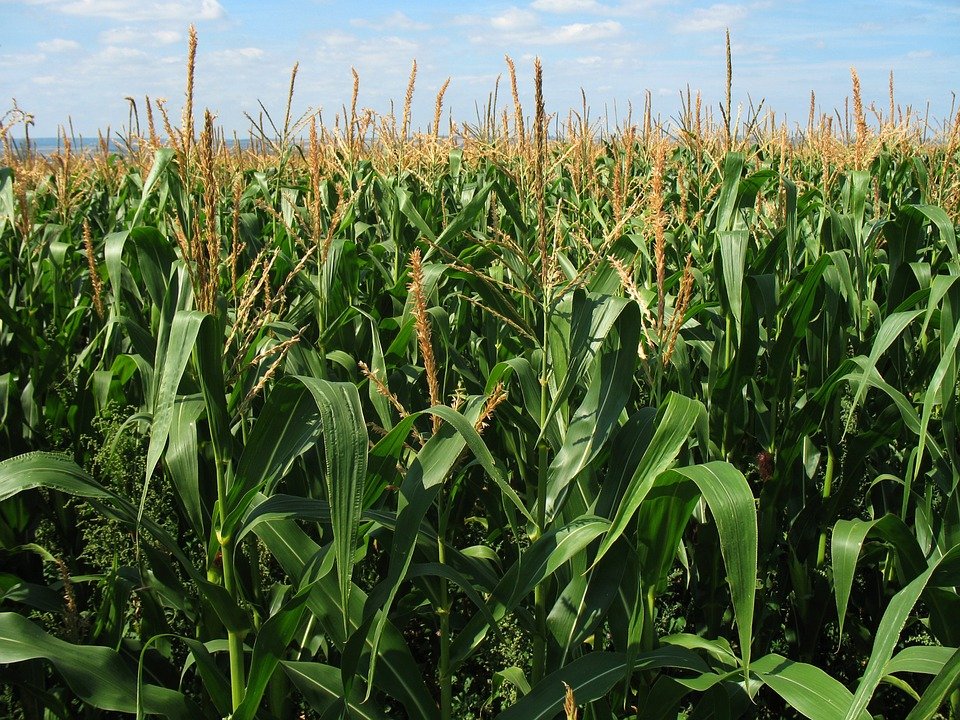
Context
On May 12, 2025, India’s Agriculture Ministry reported significant increases in sowing during the current kharif season: paddy acreage rose from 28.57 lakh ha in 2023‑24 to 32.02 lakh ha in 2024‑25 (a jump of 3.44 lakh ha), pulses from 18.47 lakh ha to 20.67 lakh ha (+2.20 lakh ha), with moong up by 1.70 lakh ha and urad by 0.50 lakh ha. Onions and potatoes also saw increases. Meanwhile, reservoir water storage is above the 10‑year average, the buffer stocks of rice and wheat are well above norms, and the wheat harvest was completed without heatwave impact. The ministry also unveiled a campaign to promote scientific agriculture, sending agricultural scientists to 700 villages.
Background
India’s kharif sowing is witnessing robust expansion: overall acreage across paddy, pulses, oilseeds and coarse cereals is up by several million hectares compared to last year, driven by timely monsoon rains and improved water availability. Previous data shows year‑on‑year increases of 10‑11% in total kharif area, with pulses and paddy leading gains.
Meanwhile, foodgrain stocks are at all‑time highs: as of June–July 2025, India holds roughly 59.5 million t of rice (buffer norm ~13.5 m t) and 36.9 m t of wheat (norm ~27.6 m t), enabling strategic market interventions.
Constitutional & Legal Framework
- Article 48 (Directive Principle): promotion of agricultural and animal husbandry.
- Essential Commodities Act, 1955: empowers government to impose stock limits on food commodities during supply pressure, though amendments since 2020 have allowed more leeway for trade except during crises.
- National Food Security Act, 2013 (NFSA): mandates buffer stocks of food grains as strategic reserves to ensure food security. State and central governments are bound to maintain statutory minimums.
Government Schemes
- PM-AASHA for price support mechanisms, procurement and minimum support price.
- Mission for Integrated Development of Horticulture (MIDH) supports vegetable (onion, potato) sowing.
- Climate-resilient farming initiatives (e.g. KVK pilot projects) to promote scientific methods in villages.
Reasons behind the Trends
- Favourable monsoon and adequate reservoir storage: reservoirs at 117% of last year and 114% of 10‑year average ensure irrigated and rainfed areas support sowing.
- Policy incentives: higher MSPs, procurement support, and assured marketing help farmers choose crops like paddy and pulses.
- Nutrition/security push: pulses cultivation rise supports protein availability and reduces import reliance.
- Crop substitution: decline in cotton acreage in states like Punjab and Haryana with shift to paddy due to better returns and lower pest risk.
- Promotion of horticulture: onion sowing up by 2.82 lakh ha, potato by 0.47 lakh ha, incentivised by market and government support.
Significance
- Food security & inflation control: surging acreage and buffer stocks provide cushion against supply shocks, enabling the government to stabilise prices via open market sales (OMSS) and welfare channels (e.g. Bharat Rice/Atta).
- Crop diversification & nutrition: pulses increase responds to protein deficiency, reducing import dependence.
- Farmer income: expanded acreage and assured procurement bolster rural income and economic resilience.
- Climate resilience & sustainability: scientific agriculture campaign and high horticultural sowing aid in building adaptability.
Technical Terms
- Buffer Stock: strategic reserves maintained by the government to ensure food security.
- MSP (Minimum Support Price): pre-announced price at which government procurement happens.
- OMSS (Open Market Sale Scheme): selling excess food grains in open market to stabilise food inflation.
- Scientific agriculture: precision farming, climate-resilient varieties, soil test-based application, mechanisation, etc.
Agricultural & Policy Nuances
- State‑level variations: states like Uttar Pradesh saw record expansion in paddy (41.9 to 55.5 lakh ha) and pulses (arhar from 1.84 to 2.73 lakh ha), within overall high kharif acreage.
- Monsoon distribution: surpluses in some regions; though overall timely progression mitigated earlier concerns.
- Reservoir water scenarios: Karnataka reservoirs ~80% capacity; enabling irrigation but also warning of pest/fungal risks in early heavy rain.
Impacts on India’s Food Sector
- Enhanced foodgrain supply and buffer adequacy reduce risk of import dependence and control price volatility.
- Better availability of pulses and vegetables could reduce retail food inflation and improve nutritional outcomes.
- Market supply chains: surplus grains allow government to run branded subsidised products (Bharat Rice/Atta).
- Export potential: high rice stocks free up surplus for export; India continues as top rice exporter.
Challenges
- Overstocking risk: excessively high buffer levels risk wastage, increased storage cost, and pressure to offload before spoilage.
- Market distortions: excess procurement sometimes discourages diversification, leading to monoculture (e.g. paddy focus).
- Weather unpredictability: monsoon anomalies later in season, or heatwaves during harvest, can threaten yields.
- Awareness & capacity gaps: wide campaign effectiveness depends on local adoption of scientific practices.
- Regulatory balance: Essential Commodities Act amendments reduce controls, but excess deregulation could lead to hoarding.
Way Forward
- Dynamic buffer policy: calibrate procurement/storage based on demand forecasts and adjust release schedules via OMSS.
- Promote crop diversification: encourage oilseeds, millets and pulses to reduce over-reliance on paddy and rice.
- Strengthen scientific outreach: expand campaigns beyond 700 villages, scale up KVK-cluster models, soil tests and drip irrigation.
- Climate-resilient agriculture: promote flood/barrier resistant crop varieties, early maturing seeds.
- Expand value chains: improved storage (cold chain for onion/potato), processing infrastructure.
- Improve data intelligence: establish a commercial intelligence framework to monitor sowing, stocks, price triggers. Seamless integration of databases across Agri, Consumer Affairs, FCI.
Prelims MCQ
Q. With reference to India’s 2024‑25 kharif season and foodgrain reserves, consider the following statements:
- Paddy acreage increased by over 3 lakh hectares compared to the previous year, reaching above 32 lakh hectares.
- Pulses sowing, especially moong and urad, recorded gains in the kharif season.
- As of mid‑2025, government-held rice and wheat stocks were significantly above buffer stock norms.
Which of the statements is/are correct?
A. 1 and 2 only
B. 2 and 3 only
C. 1 and 3 only
D. 1, 2 and 3
Answer: D. 1, 2 and 3
Explanation:
All three statements are accurate based on official Ministry data:
- Statement 1: As of May 2, 2025, paddy acreage in the kharif season stood at 32.02 lakh hectares, compared to 28.57 lakh hectares in 2023‑24—a net increase of 3.44 lakh hectares.
- Statement 2: Overall pulses acreage increased from 18.47 lakh hectares to 20.67 lakh hectares in 2024‑25, with specific growth in moong (+1.70 lakh ha) and urad (+0.50 lakh ha) varieties.
- Statement 3: Fresh data as of mid‑2025 showed government-held rice stocks at over 59.5 million tonnes (buffer norm ~13.5 m t) and wheat stocks ~36.9 m t (norm ~27.6 m t). These figures reflect substantial surplus over buffer norms, enabling planned market interventions to stabilise prices.
Hence the correct answer is D: all three statements.
Mains Question
Q. “Evaluate the significance of increased kharif acreage of paddy and pulses in 2024‑25, in conjunction with record food grain stocks. What policy steps should India adopt to address challenges related to diversification, storage, and climate variability?” (250 words)
71st National Film Awards

Context
On August 1, 2025, the 71st National Film Awards were announced by the Ministry of Information & Broadcasting, honouring films certified in 2023. Bollywood superstar Shah Rukh Khan shared the Best Actor award with Vikrant Massey for Jawan and 12th Fail—SRK’s first ever National Award in a three-decade-long career. 12th Fail, based on IPS officer Manoj Kumar Sharma’s journey, also won Best Feature Film. Rani Mukerji was awarded Best Actress for Mrs Chatterjee vs Norway. Regional cinema also flourished: Tamil film Parking won Best Tamil Film, Best Screenplay, and Best Supporting Actor (M.S. Bhaskar).
Background
Established in 1954, the National Film Awards are India’s highest official film honours, administered by the Directorate of Film Festivals under the I&B ministry. They emphasize artistic merit, social relevance, regional diversity, and excellence across technical and creative categories. Historically, awards have honoured both mainstream blockbusters and minimal-budget impactful films, reflecting the plurality of Indian cinema.
Constitutional & Legal Provisions
Though not constitutional mandates, the awards align with Article 51A(h)—the fundamental duty to promote the “spirit of inquiry and reform”. They support cultural preservation and artistic freedom, shaped under the ambit of the Cinematograph Act, 1952, which regulates film certification. Internationally, India observes UNESCO conventions on cultural diversity, to promote heritage-language cinema and artistic expression across states.
Government Schemes & UN Conventions
- Proposal for National Film Heritage Mission aims to archive films.
- Film Facilitation Office fosters international co-productions.
- The awards system resonates with UN Sustainable Development Goal 11.c (protecting heritage) and Goal 5 (gender equality), by spotlighting female-led narratives and inclusive storytelling.
Reasons & Significance
- Historic recognitions:
- SRK wins first-ever National Award after famed career—seen as overdue validation of mainstream action/drama films (Jawan) on artistic grounds.
- Vikrant Massey’s understated but impactful portrayal in 12th Fail is celebrated.
- Rani Mukerji’s win for mother-centric, emotional narrative adds socially relevant storytelling merit.
- Content vs commercial blend:
- Jawan also crossed ₹1,000 crore at the box office; its win underscores a bridging of mass entertainment and critical acknowledgment. 12th Fail’s success underscores meaningful, mid‑budget cinema’s rise.
- Regional cinema spotlight:
- Parking (Tamil) swept multiple awards; Gujarati film Vash earned Best Gujarati and Best Supporting Actress, highlighting alignment with diversity and linguistic representation.
- Kathal (Hindi satire) won Best Hindi Film, signalling recognition of offbeat storytelling.
Technical Terms
- Feature vs Popular Film Awards: Feature Film judged for artistic merit; Popular Film award recognises entertaining mass appeal.
- Special Mention: Jury recognition outside main categories (e.g. Animal‘s sound re-recording).
- Regional Categories: Awards given for best films in various Indian languages—to promote linguistic plurality.
Creative Nuances
- Jawan: SRK plays dual roles (vigilante and police officer), blending high-octane action with social commentary—critics praised him for emotional depth and physical intensity.
- 12th Fail: Based on IPS officer Manoj Kumar Sharma’s real-life journey—Massey’s performance appreciated for authenticity and inspiring emotional resonance.
- Mrs Chatterjee vs Norway: A diaspora-themed courtroom drama highlighting cross-cultural parental rights and identity.
Impacts on India’s Film Sector
- Rebalancing prestige: Recognition of commercial entertainers (Jawan) alongside realistic narratives (12th Fail) may inspire content creators to pursue a balanced mix of substance and scale.
- Boost for regional industries: Awards for Parking, Vash, Kandeelu, Ullozhukku, Bhagavanth Kesari reinforce investment in regional talent and stories.
- Technical excellence recognition: Animal’s awards for sound mixing, background score elevate recognition of technical craftsmanship.
- Aspirational validation: SRK’s win may encourage other mainstream actors to take socially conscious roles and pursue diverse roles.
Challenges
- Perceived bias or delay: SRK’s first win after 30+ years has sparked debate regarding the award system’s past selections and potential biases. ([turn0news12]turn0reddit25)
- Balancing commercial vs artistic cinema: Ensuring prestige is not diluted by high-grossing films overshadowing smaller worthy films.
- Diversity within jury: Ensuring equitable representation across regions and genders in jury composition.
- Public perception management: Managing controversies and ensuring transparency amid claims of political patronage.
Way Forward
- Declare detailed jury rationale statements to increase transparency.
- Institutionalise jury diversity norms—including regional, gender, caste parity among jury members.
- Promote National Film Heritage Mission to restore and archive winning classics.
- Enhance international visibility of award-winning regional films through festival circuits and streaming partners.
- Encourage co-production treaties to foster social-value cinema with global reach.
Prelims MCQ
Q. With reference to the 71st National Film Awards, consider the following statements:
- Shah Rukh Khan won his first-ever National Film Award for Jawan in his three-decade career.
- Vikrant Massey shared the Best Actor award for his role in 12th Fail, which also won Best Feature Film.
- The Tamil film Parking won Best Tamil Film along with Best Screenplay and Best Supporting Actor.
Which of the statements is/are correct?
A. 1 and 2 only
B. 2 and 3 only
C. 1 and 3 only
D. 1, 2 and 3
Answer: D. All three statements are correct.
Explanation:
All three statements are substantiated by official information about the 71st National Film Awards:
- Statement 1 is correct. Despite a stardom spanning over 30 years, Shah Rukh Khan had never won a National Film Award until he received the Best Actor honour for his role in Jawan (2023) — a landmark moment celebrated widely.
- Statement 2 is accurate. Vikrant Massey shared the Best Actor award with SRK for his performance in 12th Fail. The film — based on IPS officer Manoj Kumar Sharma’s journey — also won the prestigious Best Feature Film category.
- Statement 3 is also true. The Tamil film Parking, directed by Ramkumar Balakrishnan starring Harish Kalyan, secured multiple honours: Best Tamil Film, Best Screenplay, and Best Supporting Actor (M.S. Bhaskar).
Hence, all three statements reflect the official winners list and are correct.
Mains Question
Q. Critically examine the outcomes of the 71st National Film Awards, focusing on the recognition of mainstream stars alongside socially relevant storytelling, and regional cinema.



